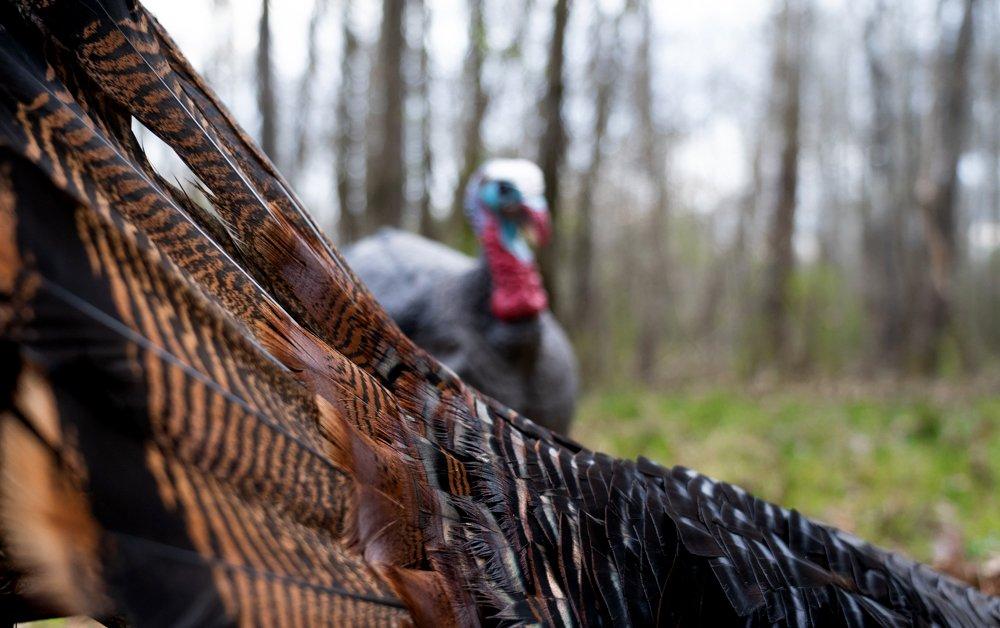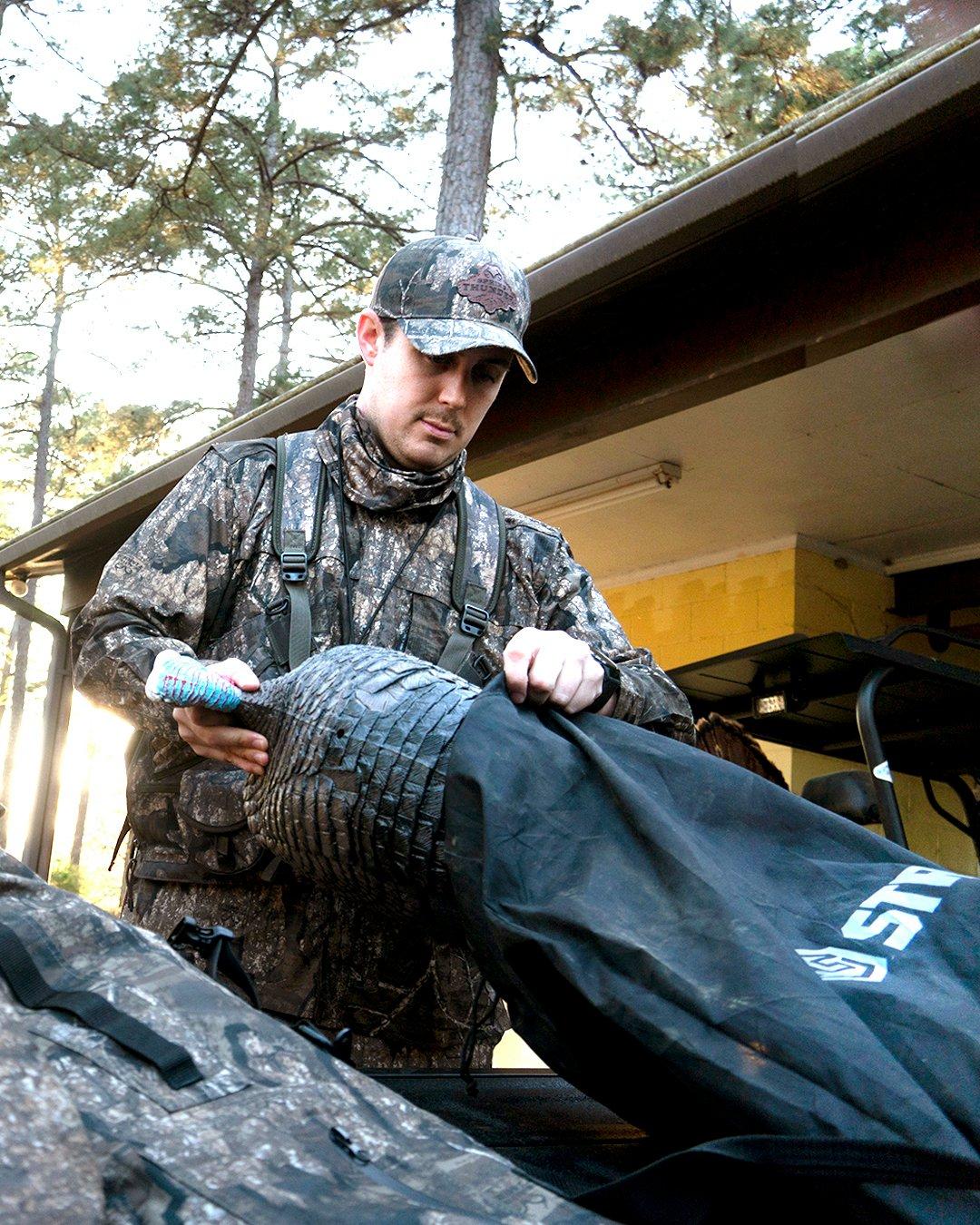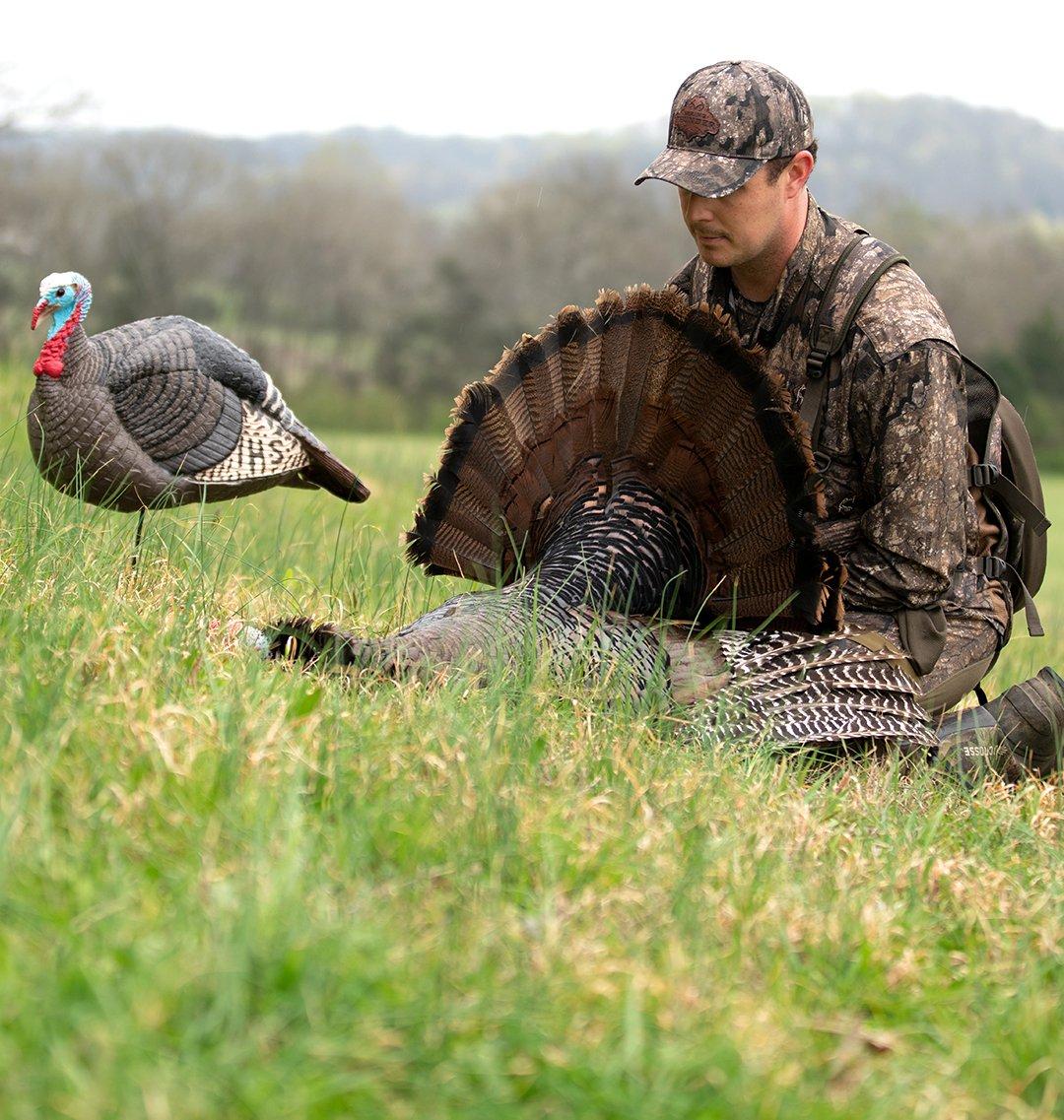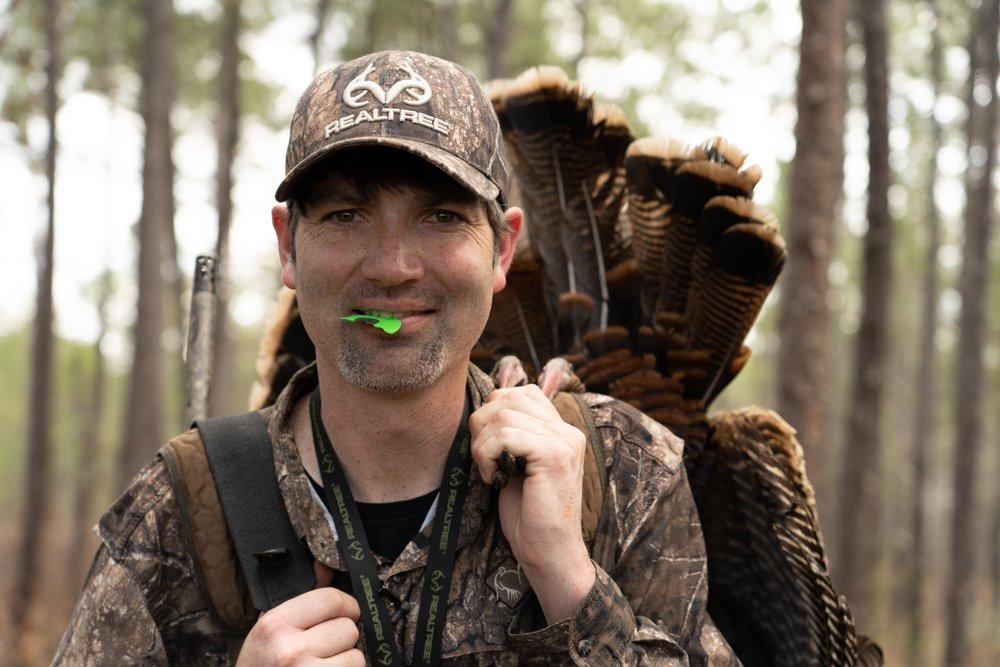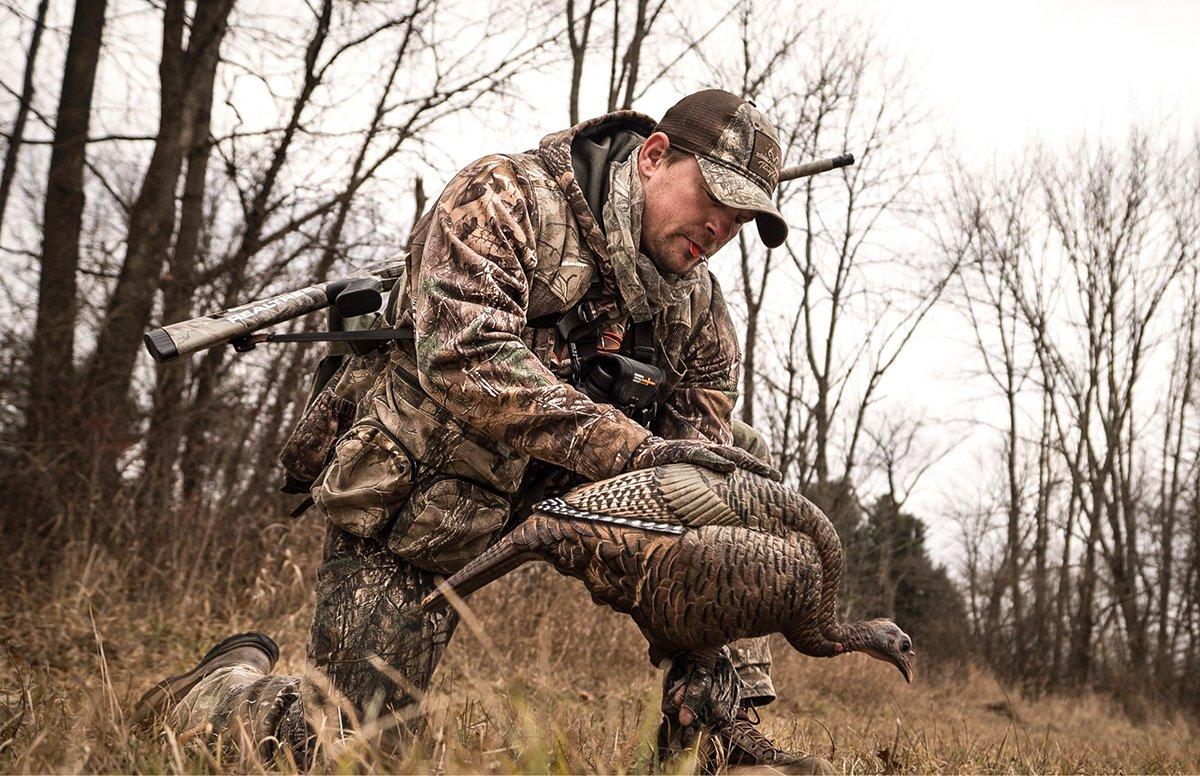Three hardcore gobbler chasers talk decoy tactics for spring's seasonal phases
Jake and hen decoys? Strutter and breeder? Full flock? Even with hyper-realistic fakes in your arsenal, you still need to adjust your tactics to the time of the season and how turkeys are behaving.
The truth is, sometimes decoys work. Sometimes not. Why do realistic decoys fail? Often, it's a matter of the fake not moving. Or the deke's positioning. Sometimes, as with subdominant longbeards or jakes, a full-fan decoy might keep them at a distance.
You see, these birds aren't looking for a fight. The fake has fooled them, but they want no part of it. And so they drift away — or run.
Or, have you ever been in a situation where you've used no decoy but called the gobbler, and it arrived in a wooded opening or field setting? This turkey looked and studied your position. Seeing no hen, it alarm-putted, did the exiting wing flick, and walked the other way. This is one tactical situation where you needed at least one fake, if not several. You called. You fooled him. He wanted to see a bird or birds and didn't.
You're not alone. These turkey pros have some advice for how to fake out real gobblers throughout the changing turkey season.
Tyler Jordan | Realtree 365's Spring Thunder
It will really just depend on how the bird is behaving, but I will typically use just a hen early in the season and sometimes no decoy at all, so they come looking, Jordan says. No matter the time of year, I'll keep a full fan beside me in case he is looking for some kind of movement.
During the early and midseason periods, to mix it up a bit, Jordan will also use a jake and hen decoy set, even sometimes a strutter, depending on how turkeys are acting.
In the late season, as hens are nesting, Jordan adjusts his approach. I'll use a full strutter toward the end of the season when there are fewer hens to be bred and those gobblers are forced to compete for those last few hens.
Keep a full turkey fan by your side at all times," says Realtree's Tyler Jordan. "There's no telling when you might have to go rogue and sometimes that extra movement with a fan can seal the deal on a longbeard if they're hung up.
Is there any time late in the season when he keeps his decoys in the bag?
Yeah, sometimes when you're in the timber and the woods are starting to really get thick, no decoy works because they have to come all the way in to see it, he says.
JORDAN PRO TIP: Keep a full turkey fan by your side at all times. There's no telling when you might have to go rogue and sometimes that extra movement with a fan can seal the deal on a longbeard if they're hung up.
[Don't Miss: Realtree 365's Spring Thunder episodes]
Phillip Culpepper | Hunt Club with Phillip Culpepper
Early in the season I like to use a hen and jake decoy, or a strutter decoy if I have one, says Culpepper. Mainly when it's still early, turkeys are figuring out their pecking order and don't seem to have established that dominance yet, so I've seen a strutter work really well early on.
He favors one specific setup though.
I typically like to run-and-gun with just a jake decoy that I'll put out," Culpepper says. "When hunting private land, I keep a strutter-type decoy by my side, so I can help add movement and trip the trigger on a hung-up bird if he won't commit to the jake."
(Where it is legal, he reminds us, as in some states, decoys cannot be manipulated and must stay stationary by law.)
CULPEPPER PRO TIP: One thing about decoys that seems so obvious but is often overlooked is: to be effective, they have to be seen, so make sure to put it on display! Also, I have had more luck with decoys in the sun than in the shadows. If I'm going to crawl and fan one in, I want that sun shining in my face or directly on me, as much as I can get. I have spooked lots of turkeys with the sun at my back.
[Don't Miss: Cool Photos of Gobblers Fooled by Decoys]
Anthony Virga | Realtree Pro Staffer
Most times in the early season, I'm definitely using a feeder hen, and maybe a jake of some sort, usually a quarter strut, with a good sculpted and colorful head, Realtree pro staffer Anthony Virga says. I'll position the jake anywhere in the vicinity of my hen. Birds throughout the year are establishing their pecking orders. Early in the season is a time when it's easy to use this 'add fuel to the fire' kind of approach with a hen and jake.
What fake stakes does he use during the midseason period? Jake and hen? Something else?
In midseason, I'll lean to a single feeding hen, Virga says. Some subordinate gobblers may have been beaten up during the first few weeks of the season, either by a group of jakes or a more dominant gobbler, so a lonely hen will give that bird some ease in persuasion.
Late season has its challenges too, of course. Gobblers you hunted may have been tagged by somebody else. Hot weather may shut birds down. Though Virga has traveled the states for the Osceola, Rio Grande, and Merriam's subspecies, the New Jersey resident often hunts his home state then, for Easterns.
This time of year, the greened-up woods are fuller, and the birds may be wiser. In high-pressure areas where I hunt the Northeast, I'll call less. I may not even use a decoy at all, Virga says. But, if I did, it would still be a feeding hen. More times than not, I'm going to a feeder.
His reasoning is the relaxed body language of the feeding hen decoy makes an approaching turkey comfortable. It's just the fact that she's just a turkey being a turkey, feeding on something good that may attract other birds to the area, says Virga, especially an approaching gobbler looking for one last courtship.
VIRGA PRO TIPS:
- Safety is a huge deal when using highly realistic decoys available these days. Always be on high alert on public, even private land.
- Set decoys up at 15 to 25 yards from your setup — in case a gobbler hangs up.
- Stake them slightly off to the left or the right (not directly in line with you and where you think the approaching gobbler is coming).
- Be careful of sun glaring on your setup.
- Carry an extra decoy stake. There's nothing quite like having to snap a stick to use in the early morning hours because you lost one, Virga says.
What makes Realtree.com the best online resource for turkey hunters? See for yourself. We cover all things turkey right here.


